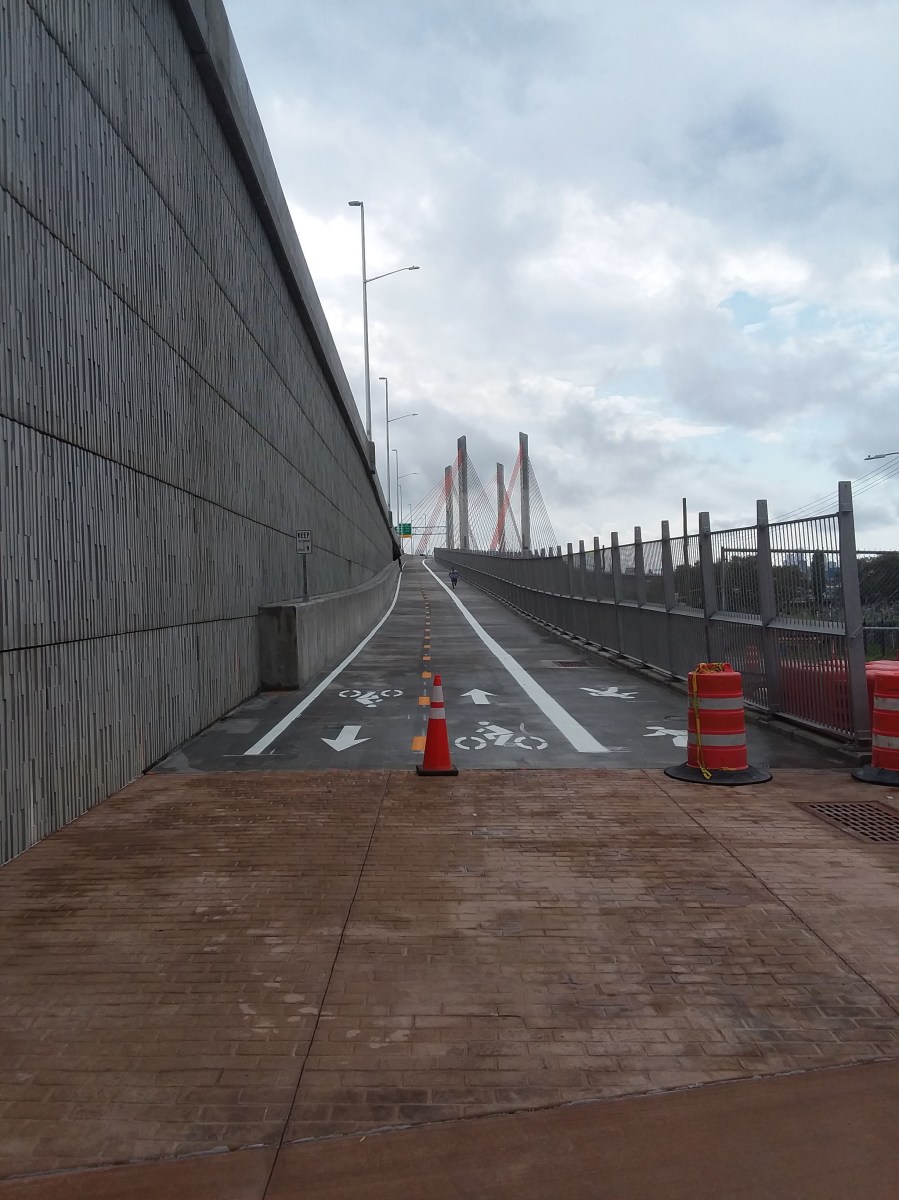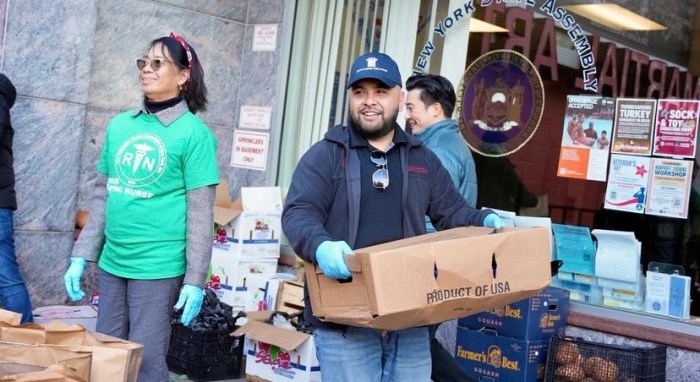The city’s Department of Transportation is expediting its plans to create safe and effective connections for bicyclists and pedestrians to the shared-use path on the new second span of the Kosciuszko Bridge between Queens and Brooklyn.
DOT Commissioner Polly Trottenberg detailed the improvements in a letter to City Comptroller Scott Stringer after he criticized the agency for the lack of infrastructure that would protect cyclists and pedestrians on roads leading to the bridge when it opened Aug. 29.
“Based on NYSDOT’s (New York State Department of Transportation) original estimate that the new path would open in the fall, we had scheduled implementation of the city street portion of these connections for late summer,” Trottenberg wrote, adding that new signs and marking would be installed along the approaches to the K-Bridge this week.
“On the Queens side of the bridge, NYSDOT is still at work on some of the key infrastructure connections, particularly along Laurel Hill Boulevard. That street will eventually include a new parking protected bike lane,” Trottenberg wrote. We will coordinate relevant on-street bike connections with the completion of that work starting with 43rd Street, which includes raised lanes, and 50th Avenue.”
Additional lanes will be added in the coming months on 47th Street and 48th Street in Maspeth and Woodside, with 56th Road and Rust Street in Maspeth under development for 2020. Similar work will be done on the Brooklyn side of Newtown Creek.
Trottenberg added that over the long term, DOT will continue to work on a larger protected bike lane network shown in the Green Wave plan, which outlines planned protected bike lane connections on both sides of the new bridge.
Stringer’s letter highlighted the urgent need for action as the city confronts cyclist and pedestrian safety across the five boroughs. Already this year, 19 cyclists have been killed — nearly twice the number in all of 2018 — which according to the DOT have occurred disproportionately in primarily industrial areas that have experienced significant population growth.
“Just as no transportation department would open up a highway before constructing on- and off-ramps, it is utterly baffling that a new bike and pedestrian path could be introduced without sufficient connecting infrastructure, on Day One,” Stringer said. “The rebuilt Kosciuszko Bridge and the new pedestrian and cycling path are critical arteries, but without protected bike lanes, sufficient lighting and high-quality signage in the immediate vicinity, cyclists and pedestrians could be placed in harm’s way.”
Trottenberg said DOT is “excited about the new addition to New York City’s bicycle network, we know it comes against the backdrop of a challenging year for bicyclist safety” in the five boroughs. She concluded by noting that 30 miles of new protected bike lanes would be built within New York City in 2020.




































